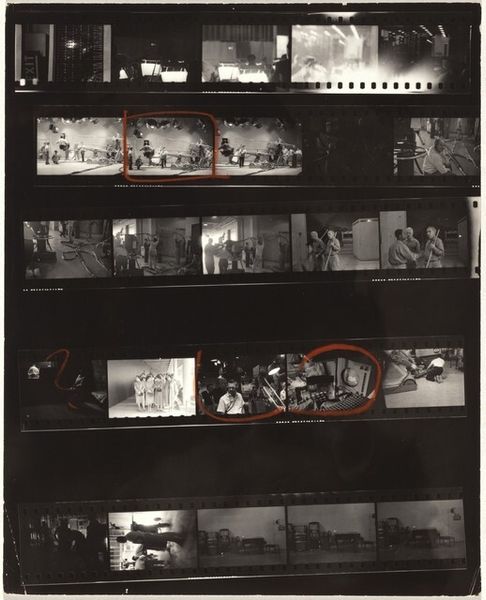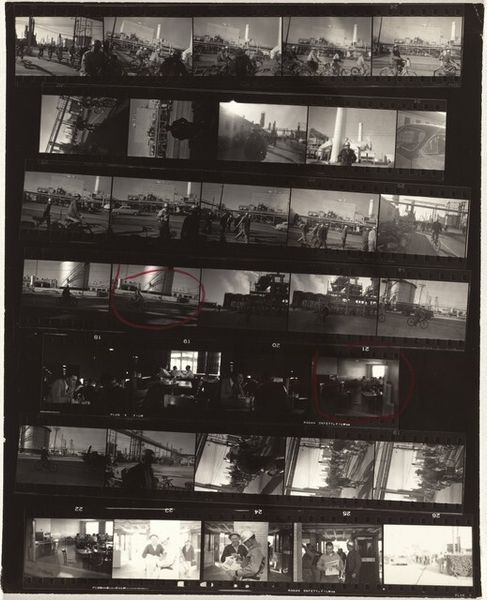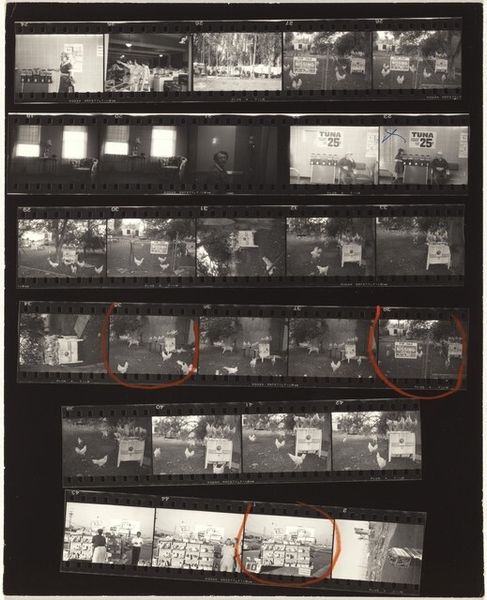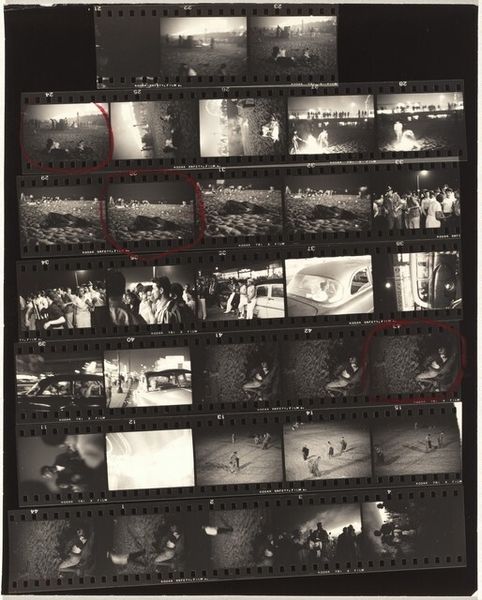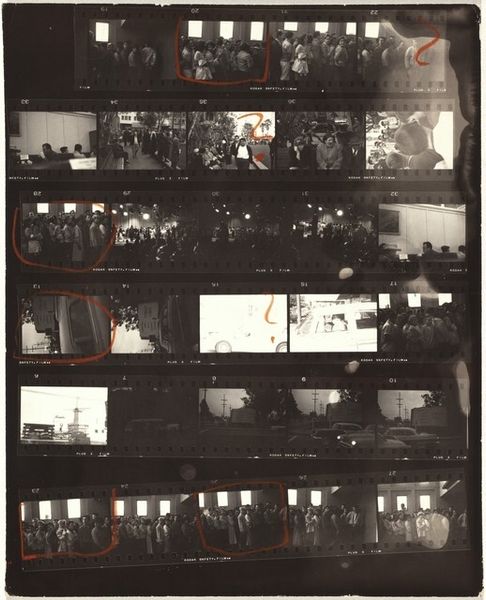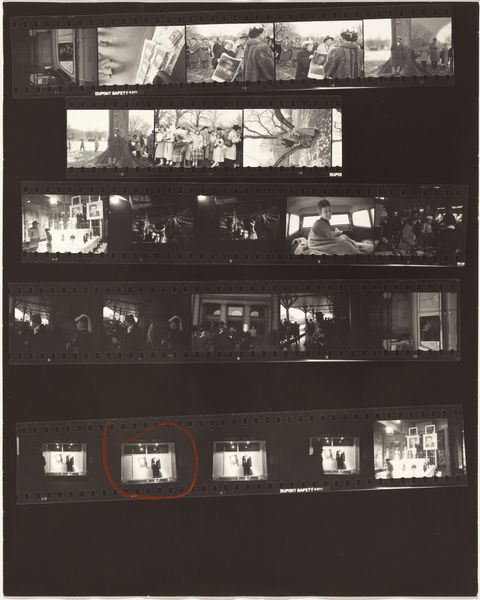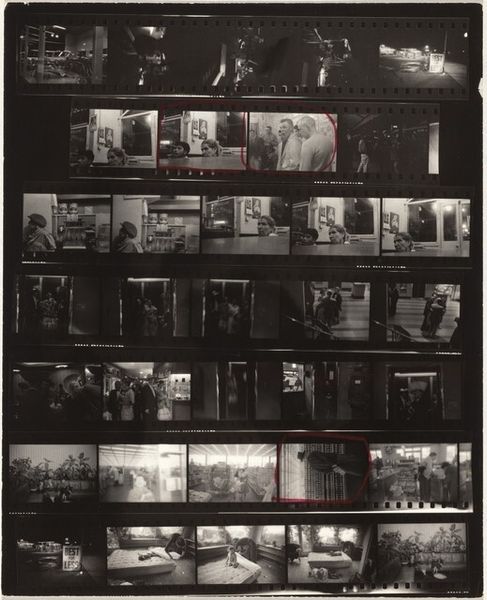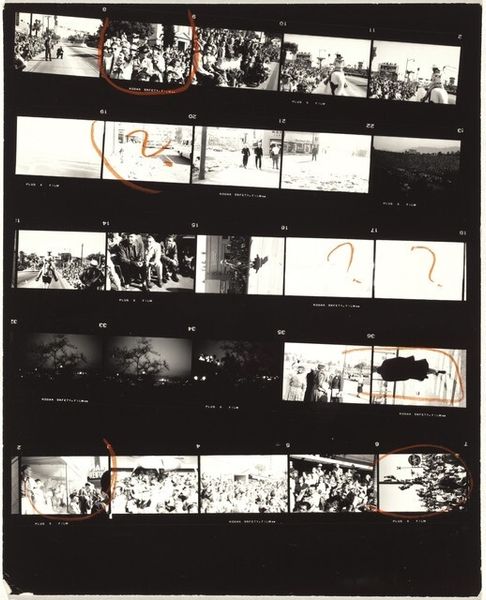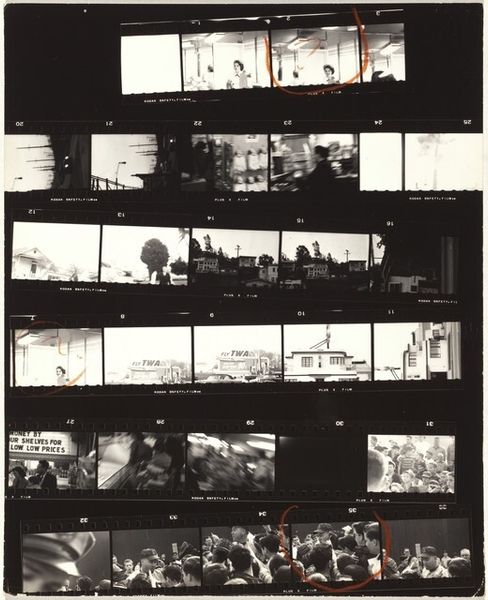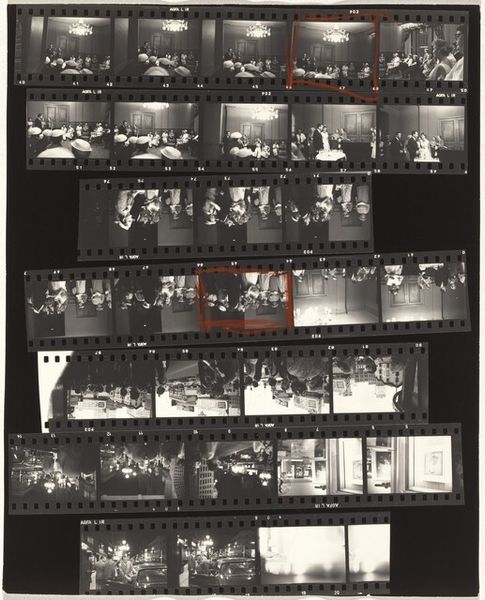
photography, gelatin-silver-print
#
portrait
#
film photography
#
street-photography
#
photography
#
gelatin-silver-print
#
film
#
modernism
Dimensions: overall: 25.3 x 20.5 cm (9 15/16 x 8 1/16 in.)
Copyright: National Gallery of Art: CC0 1.0
Curator: This is "Guggenheim 500--Fashion show, Los Angeles," a gelatin silver print created by Robert Frank between 1955 and 1956. Editor: It has a rather eerie feeling. The sequential frames give a sense of disjointed moments and unsettling voyeurism into a bygone era of glamour. Curator: Frank, deeply invested in documenting the American social landscape of the time, presents here an outtake, if you will. This isn’t a polished, promotional image. It's raw and unedited. The entire film roll functions as a visual document, a study, if you will. It reveals as much about photographic process and the selection process, as it does about its supposed subject. Editor: Precisely. The formal qualities support that. Look at the contrast, the high key lighting…it gives the subjects an almost theatrical, artificial appearance. This piece speaks to modernism. We can decode the visual components – light, shadow, composition – to understand the work’s structure and artistic intent, a critical self-awareness perhaps? Curator: Exactly! The Guggenheim award enabled him to take a road trip across America. The resulting photos captured his outsider perspective on American life. His approach reflected his critical view of postwar American society. Not necessarily glamorous but revealing the quiet disquiet and inequality lurking beneath the shiny surface. This piece functions like an informal ethnographic record and cultural criticism, defying any single aesthetic goal. Editor: You’re right; Frank seems less concerned with capturing beauty, or rather redefining beauty, isn't he, but fixated with revealing a more ambiguous representation. As a film roll, it shows how it's not about "the moment", but about a sequence of them and a broader commentary. A very conscious effort. Curator: It definitely pushes us to consider what and how photographers represent social structures through their lens. Its roughness and lack of formal polish reflect the social realities of that period, challenging conventional imagery. Editor: Yes, what at first glance might seem chaotic ultimately presents us with an interesting look behind the curtain, questioning aesthetic intentions themselves and encouraging an unconventional reading. Curator: Agreed. Thank you. Editor: Indeed.
Comments
No comments
Be the first to comment and join the conversation on the ultimate creative platform.
